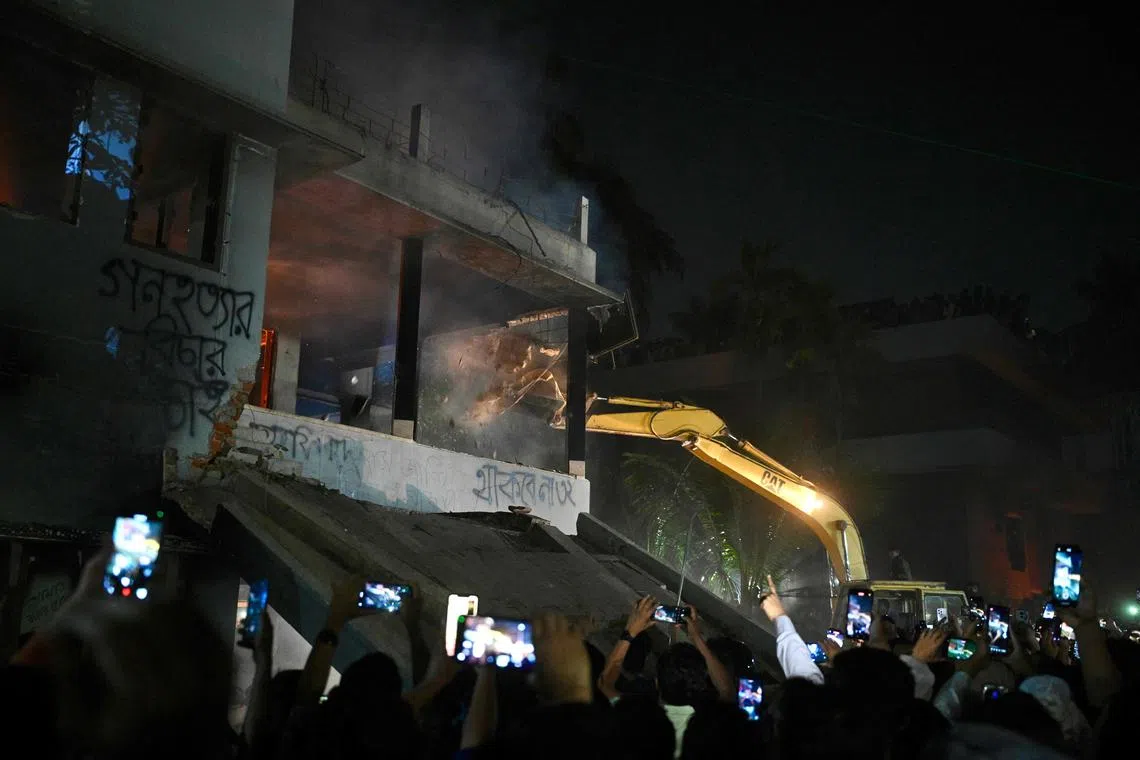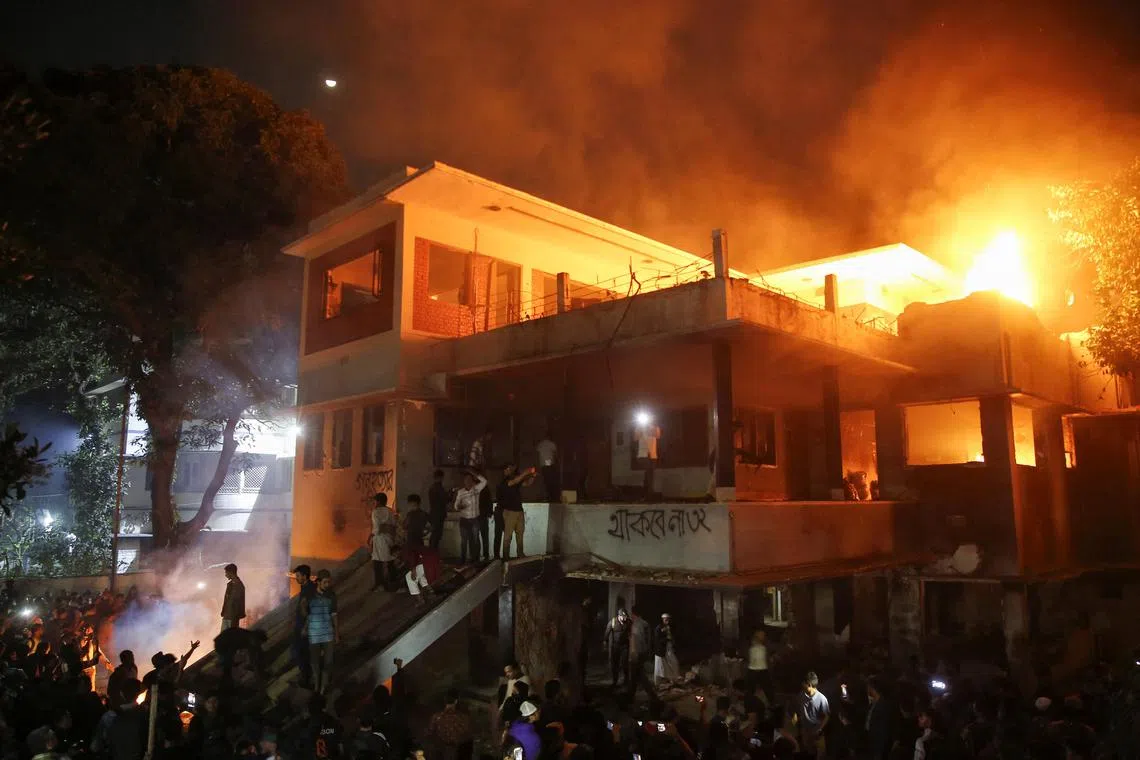Bangladesh protesters try to demolish home of Hasina’s father
Sign up now: Get insights on Asia's fast-moving developments

Protesters setting fire to the former residence of Mr Sheikh Mujibur Rahman, father of ousted leader Sheikh Hasina, in Dhaka on Feb 5.
PHOTO: AFP
Follow topic:
DHAKA - Bangladeshi protesters on Feb 5 brought excavator diggers to the former home of the father of ousted autocratic leader Sheikh Hasina,
Her father, Bangladesh’s first president Sheikh Mujibur Rahman, is widely viewed as an independence hero, but his relation to Ms Hasina has turned him into a symbol of hate for many.
Some protesters arrived at his home, which had been turned into a museum, armed with hammers to smash down its walls, with crowds cheering as fires torched the building.
The home had already been badly damaged during the student-led revolution in 2024 that ended Ms Hasina’s 15 years of autocratic rule.
On Feb 5, six months to the day since Ms Hasina fled by helicopter to old ally India on Aug 5 – capping an uprising that claimed hundreds of lives – student protesters again stormed the compound in the capital Dhaka.

Protesters using an excavator to demolish the Bangabandhu Memorial Museum, the former residence of Mr Sheikh Mujibur Rahman, father of ousted autocratic leader Sheikh Hasina, in Dhaka, on Feb 5.
PHOTO: AFP
Protests were triggered in response to reports that 77-year-old Ms Hasina, who has defied an arrest warrant to face trial for massacres, would appear in Facebook broadcast from exile.
Hundreds of protesters gathered at Mr Rahman’s home after a call by Mr Hasnat Abdullah, convener of the Anti-Discrimination Students Movement, the protest group credited with sparking the uprising against Ms Hasina.
Mr Abdullah posted on his Facebook page that the “Holy Land of Fascism” should be freed.
Student Mahmudur Rahman, 18, said he joined because he believed it was justified to uproot the “symbol of fascism”.
Mr Mohammad Arefin, 25, said there was no reason for the house to remain standing.
“It was a museum, and the government was its custodian,” he said.
“Since we, the students, have formed the government through revolution, we find it legitimate to demolish it.”
Mr Rahman became the country’s independence hero after the war that split the South Asian nation from Pakistan in 1971. He was killed in 1975.
Ms Hasina’s government was accused of widespread human rights abuses, including the extrajudicial killing of hundreds of political opponents and the unlawful abduction and disappearance of hundreds more.

The home had already been badly damaged during the student-led revolution in 2024 that ended Ms Hasina’s 15 years of autocratic rule.
PHOTO: REUTERS
Mr Talebur Rahman, spokesman for the Dhaka Metropolitan Police, said he was unaware of any government order to demolish the house.
“I don’t know who the custodian was, or who was responsible for maintaining the museum,” Mr Rahman told AFP.
Student Torikul Islam, 24, said the crowds had not been stopped by the security forces.
“I haven’t encountered any objections from the police,” he said. “The army is patrolling and talking to us”. AFP

